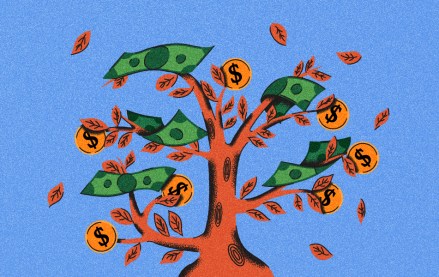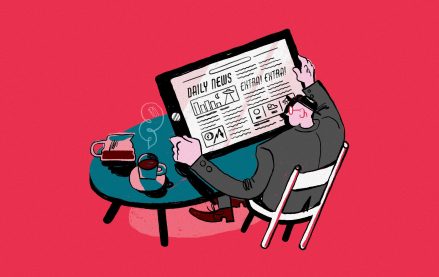‘We have to get the knowledge in-house’: Why Malibu does its own influencer marketing
Sign up for the Cannes Briefing for daily updates on what Digiday is doing this year at Cannes delivered every morning.
When it comes to influencer marketing, agencies are no longer in the driving seat for some of Pernod Ricard’s brands.
Five years ago, marketers for Malibu took a hands-off approach to their influencer marketing strategies. Instead, their agencies managed, monitored and measured some of the internet’s biggest stars. But now that an increasing proportion of its media and creative budget is flowing to influencers, the drinks brand’s global, and increasingly local, marketing teams want more control of it.
“Instead of spending money on traditional media, we’re putting it into influencer marketing,” said Monica Jungbeck, global marketing manager at Malibu. Jungbeck declined to say how much money it spends on influencers, though said they are a major focus for Malibu’s marketing, and dip into social, events, production and traditional budgets.
Other brands are making similar bets even as they struggle to understand what it is influencers deliver beyond reach. General Mills spends as much as a third of the digital budget for some of its brands on influencer marketing, for example. Despite the confusion, spend continues to rise. In 2017, the global Instagram influencer marketing industry, which is one of the biggest alongside YouTube, was worth $1.1 billion and will hit $2.9 billion in 2019, according to Statista.
“We have to take that full influencer knowledge in-house,” said Jungbeck. Everything from the type of influencer signed to the way their posts perform weekly, is watched by Malibu’s own marketers at a global and local level. High-profile influencers, who usually have a short-term contract with Malibu, are managed by global marketers like Jungbeck, whereas local ones, who tend to have quid pro quo arrangements, work with marketers in their respective markets. Those deals are focused on YouTube, Instagram and Facebook. IGTV is also being tested, while the audience on rapidly emerging TikTok is too young for an alcohol brand like Malibu, said Jungbeck.
Before any sort of deal is struck with an influencer, the brand delves into their past for any misdemeanors, and will also scrutinize previous posts to see how fans have reacted. An influencer with between 15 million and 200 million followers is deemed a “mega-influencer” by Malibu marketers, who see any branded post where the number of positive reactions is above 5% as the start of something good. That engagement rate rises to 10% for micro-influencers who tend to have more loyal and reactive audiences.
Having insight like this is crucial in a heavily regulated market like alcohol, where advertisers skirt long-term deals with influencers to avoid getting burned if they behave badly. “We think the brand needs to have the relationship with the influencer because we want to make sure that person buys into our brand and embraces the campaign,” said Jungbeck.
Malibu decided not to pay celebrity singer Nick Jonas to front its competition in which influencers battle each other in water fights and dance-offs in the Dominican Republic, for a second summer running. Instead, the marketing team opted to go all in on influencers, because Jonas hadn’t connected with the campaign’s fans in the way it had hoped, said Jungbeck. Five years ago, the agency would have made that call, whereas this time they were asked to source the influencer talent.
Sourcing talent remains hard as it relies on relationships with agencies, agents and sometimes the influencers themselves. While many advertisers delegate this part of influencer marketing to media, sponsorship or influencer agencies, more influencer-specific roles are cropping up to handle those efforts exclusively. In some markets, like Argentina, Malibu’s marketers source micro-influencers themselves, said Jungbeck. Micro-influencers are asked to take part in the summer games and effectively localize the campaign alongside the efforts of their larger counterparts.
More advertisers like Adidas and Kellogg’s are turning to smaller influencers for two reasons: it’s cheaper, particularly as engagement on a post becomes increasingly as important as its reach. Secondly, demand for influencers has made them more promiscuous with their loyalties to brands, meaning marketers can sometimes struggle to stand out in a long line of endorsements.
“We’re starting to see brands get creative with how they pull influencers of different sizes together for a single campaign,” said Sarah Whitfield, global CMO at influencer marketing platform Buzzoole. “A brand may have one big influencer who can generate them loads of reach and have their content supported by someone with a small following who is creative and then a handful of small influencers who are close to their followers. Brands are starting to get smarter about how they create combinations of influencers.”
In fact, Malibu is increasingly asking influencers to create posts from scratch. Besides large and small influencers, the brand has started pursuing those that have a creative flair. These influencers have more freedom to create their own posts from Malibu’s content. They’re also the ones who increasingly eat into the budget usually reserved for campaign production. “Influencers are already replacing agencies in some cases,” said Jungbeck. “For the Malibu Games, there’s more emphasis on influencers creating more content for us versus traditional production content.”
Malibu’s intent to do as much as it can direct with influencers won’t treat agencies solely as talent scouts. The Vice-owned agency Virtue has acted more like a consultant to the brand for the Malibu Games campaign, having helped come up with the idea.
More in Media

News publishers may be flocking to Bluesky, but many aren’t leaving X
The Guardian and NPR have left X, but don’t expect a wave of publishers to follow suit. Execs said the platform is still useful for some traffic and engaging with fandoms – despite its toxicity.

Media Briefing: Publishers’ Q4 programmatic ad businesses are in limbo
This week’s Media Briefing looks at how publishers in the U.S. and Europe have seen programmatic ad sales on the open market slow in the fourth quarter while they’ve picked up in the private marketplace.

How the European and U.S. publishing landscapes compare and contrast
Publishing executives compared and contrasted the European and U.S. media landscapes and the challenges facing publishers in both regions.







